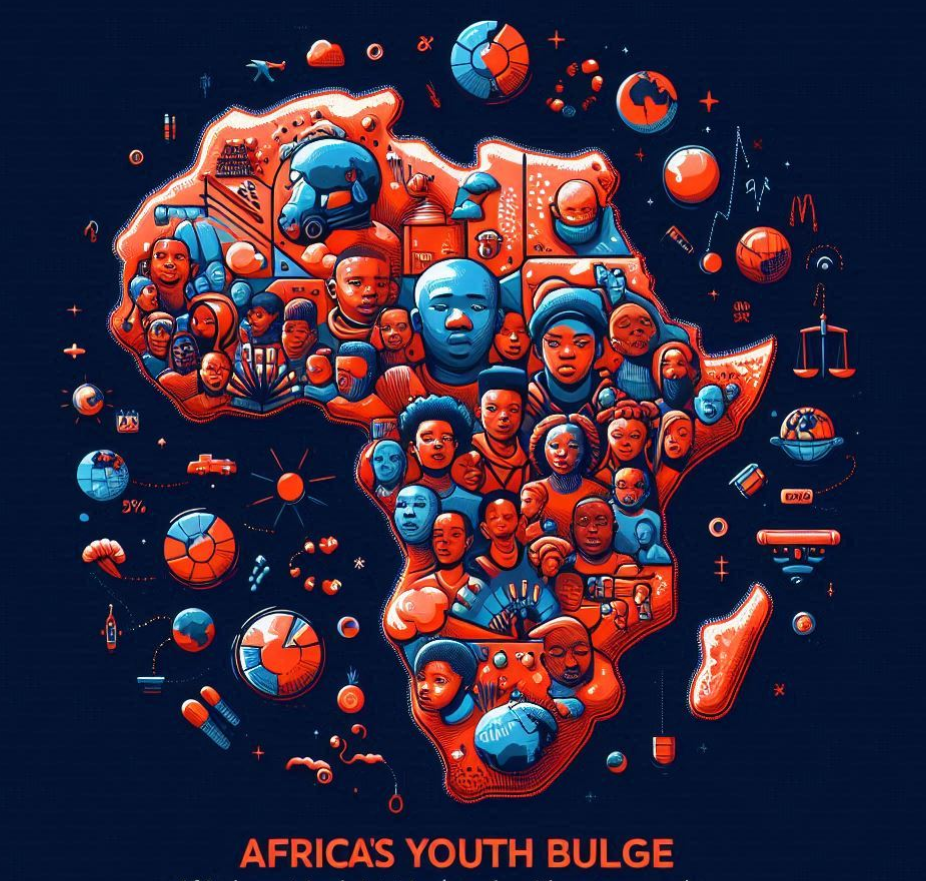Understanding the Democratic by the Demographic: Youth bulge and youth political behavior in Africa
DAI-Africa undertakes research projects that seek to understand the nexus between youth demographics and youth politics in Africa. The extended abstract of our current research project is seen below:

Extended Abstract
Although many characteristics define Africa’s population, the continent’s youth bulge (a disproportionately large share of young people aged between 15-29 years in the adult population 15 years+) is the most defining characteristic of the continent’s demographic landscape. With over 70% of the continent’s population under 30 years, Africa is the youngest continent now and many years into the future. The median age (i.e., the age at which half of the population is younger) of the continent in 2023 stood at 19.0 years, with that of Sub-Saharan Africa at 18.08 years. In countries such as the Central African Republic (14.32 years), Niger (15.25 years), Chad (15.40 years), Somalia (15.45 years), Mali (15.47 years), Democratic Republic of Congo (15.77 years) and Burundi (15.90 years), the median age is much lower than the continental average (United Nations, 2024).
While the phenomenon of youth bulge has received significant attention in both research and policy discussions, its consideration as a potential explanatory factor for individual political attitudes and participation among young people is yet to receive serious attention in the conversation on the nexus between demography and politics. The primary focus of empirical research and concomitant policy discussions have mainly been on the macro-level security implications of youth bulge (Cincotta, 2017; Goldstone, 2002; Goldstone et al., 2012; Korotayev et al., 2022; Sawyer et al., 2022), and its threat to the consolidation of liberal democracy (Cincotta, 2023; Cincotta & Doces, 2011; Weber, 2013). Other studies have also focused on the structural social and economic implications of a youth bulge (Bricker & Foley, 2013; Campante & Chor, 2012; Korenman & Neumark, 2000; Moffat & Roth, 2016).
Surprisingly little, however, is currently known about the political implications of youth bulge on the individual members of the cohort, particularly regarding their political attitudes and participation behaviors. This scarcity of studies on the ramifications of youth bulge on individual youth political attitudes and participation, and the general lack of inclusion of demographic factors in analyses of political attitudes and participation, despite their significant influence, represent a glaring gap in our collective knowledge as political scientists and policymakers.
Africa’s unique position as the youngest continent makes it a fascinating case for a longitudinal study on the effect of its youth bulge on political attitudes and participation of the youth constituting the bulge, and the socioeconomic mechanisms that moderate these relationships. Such a study, while improving our understanding of the theoretical and empirical implications of the relationship, can also provide important insights into the political future of the African continent and inform policy measures that can address young people’s perceived negative disposition towards politics.
This study examines whether the youth bulge ratio, or the proportion of youth in the adult population, influences the individual political attitudes, and participation behaviors of the young people forming the bulge in both institutionalized and non-institutionalized politics. It also examines the role of youth unemployment as a potential moderating factor in the relationships. The study employs random-intercept multilevel binary logistic Models and interaction plots on individual-level youth data from the Afrobarometer survey rounds 2-8, and country-level data from the World Bank, the United Nations Population Bureau, and the V-DEM liberal democracy index, to test four hypotheses guiding the study. The findings of the study have important implications for both theory and policy in Africa.
The Final Working Paper published, under the title: “The “Demo-conomics” in African Youth Politics. Youth Bulge and Unemployment Meet Political Attitude and Participation” can be accessed here: https://www.megatrends-afrika.de/en/publication/working-paper-15-the-demo-conomics-in-african-youth-politics
The analysis of the study reveals a nuanced relationship between the youth bulge and the political attitudes and participation behaviours of African youth. A high youth bulge ratio is associated with strong support for democracy (i.e. support for democratic norms and values), as well as a decreased likelihood of young people endorsing military rule. A youth bulge is also associated with an increased likelihood of youth participation in demonstrations/protests, and perhaps undesirably, an increased likelihood of young people resorting to violence or the use of force for political causes. By contrast, a high youth bulge ratio decreases the likelihood of a young person voting in elections, possibly suggesting a disconnect between the desire for democratic principles and electoral participation.
The national youth unemployment rate incidentally plays a critical role in altering some of these dynamics. As a direct effect, it significantly diminishes pro-democracy attitudes among youth, reducing their support for democratic governance while increasing approval for military rule. The interaction between youth unemployment and a youth bulge, although modest in the size of its effect, further complicates the landscape of youth political participation, as high unemployment rates alongside a substantial youth bulge significantly decrease the likelihood of youth participation in demonstrations and protests. At the individual level, the interaction between a youth bulge and individual employment status reveals that unemployed individuals within the youth bulge are less likely to engage in both voting and protest activities. These findings underscore the complex relationship between demographic and socioeconomic factors, political attitudes, and political participation.
References
- See the total population of Africa from 2000 to 2030 at: https://www.statista.com/statistics/1224168/total-population-of-africa/
